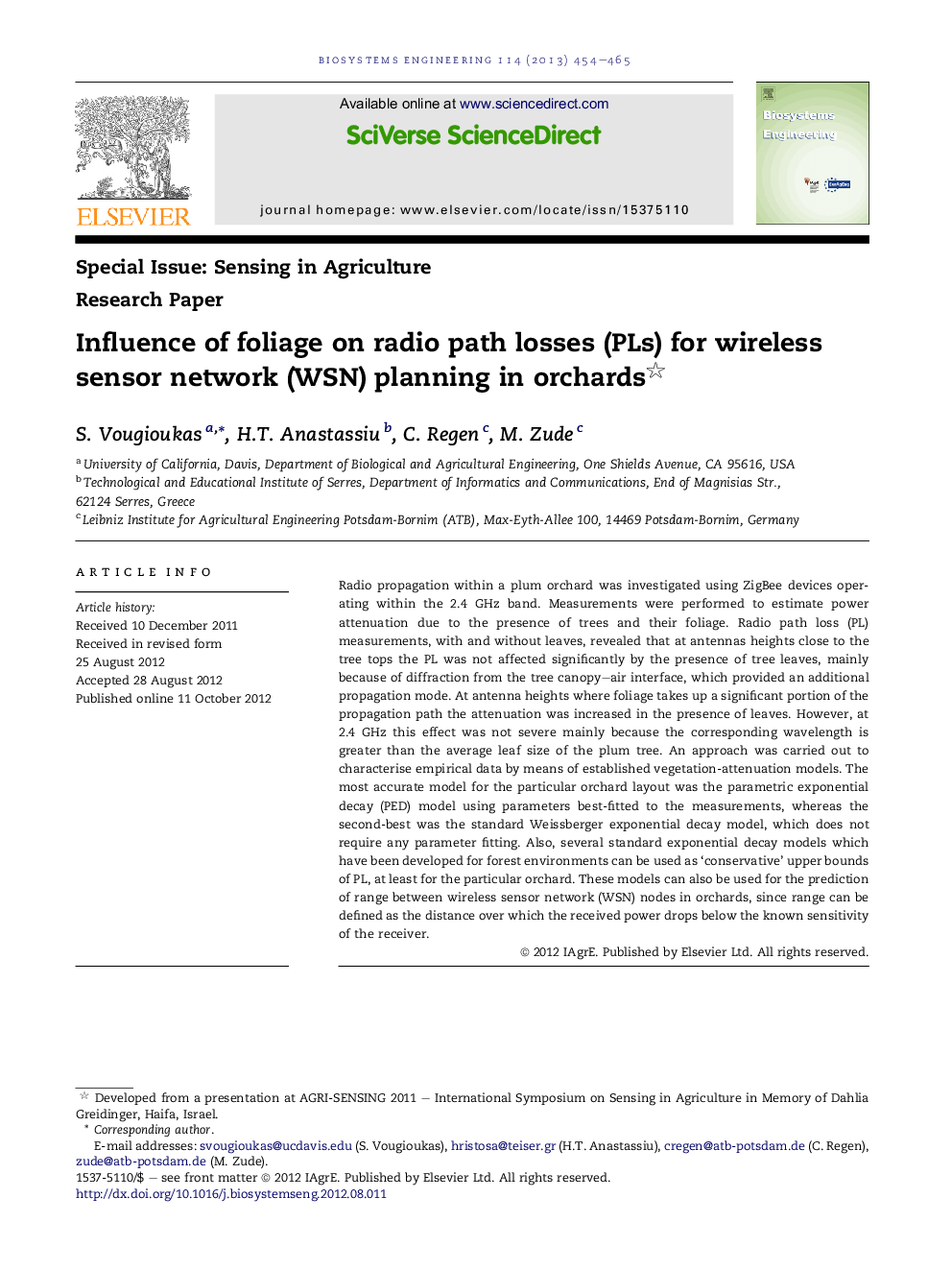| Article ID | Journal | Published Year | Pages | File Type |
|---|---|---|---|---|
| 1711380 | Biosystems Engineering | 2013 | 12 Pages |
Radio propagation within a plum orchard was investigated using ZigBee devices operating within the 2.4 GHz band. Measurements were performed to estimate power attenuation due to the presence of trees and their foliage. Radio path loss (PL) measurements, with and without leaves, revealed that at antennas heights close to the tree tops the PL was not affected significantly by the presence of tree leaves, mainly because of diffraction from the tree canopy–air interface, which provided an additional propagation mode. At antenna heights where foliage takes up a significant portion of the propagation path the attenuation was increased in the presence of leaves. However, at 2.4 GHz this effect was not severe mainly because the corresponding wavelength is greater than the average leaf size of the plum tree. An approach was carried out to characterise empirical data by means of established vegetation-attenuation models. The most accurate model for the particular orchard layout was the parametric exponential decay (PED) model using parameters best-fitted to the measurements, whereas the second-best was the standard Weissberger exponential decay model, which does not require any parameter fitting. Also, several standard exponential decay models which have been developed for forest environments can be used as ‘conservative’ upper bounds of PL, at least for the particular orchard. These models can also be used for the prediction of range between wireless sensor network (WSN) nodes in orchards, since range can be defined as the distance over which the received power drops below the known sensitivity of the receiver.
► Foliage effects on electromagnetic (EM) propagation examined in a plum orchard. ► Attenuation at tree-top height not affected much by foliage due to diffraction. ► Attenuation at mid-canopy height was slightly increased in the presence of leaves. ► Scattering-induced attenuation at 2.4 GHz was limited due to long wavelength. ► Foliage path-loss models provided conservative lower bounds for 2.4 GHz range.
